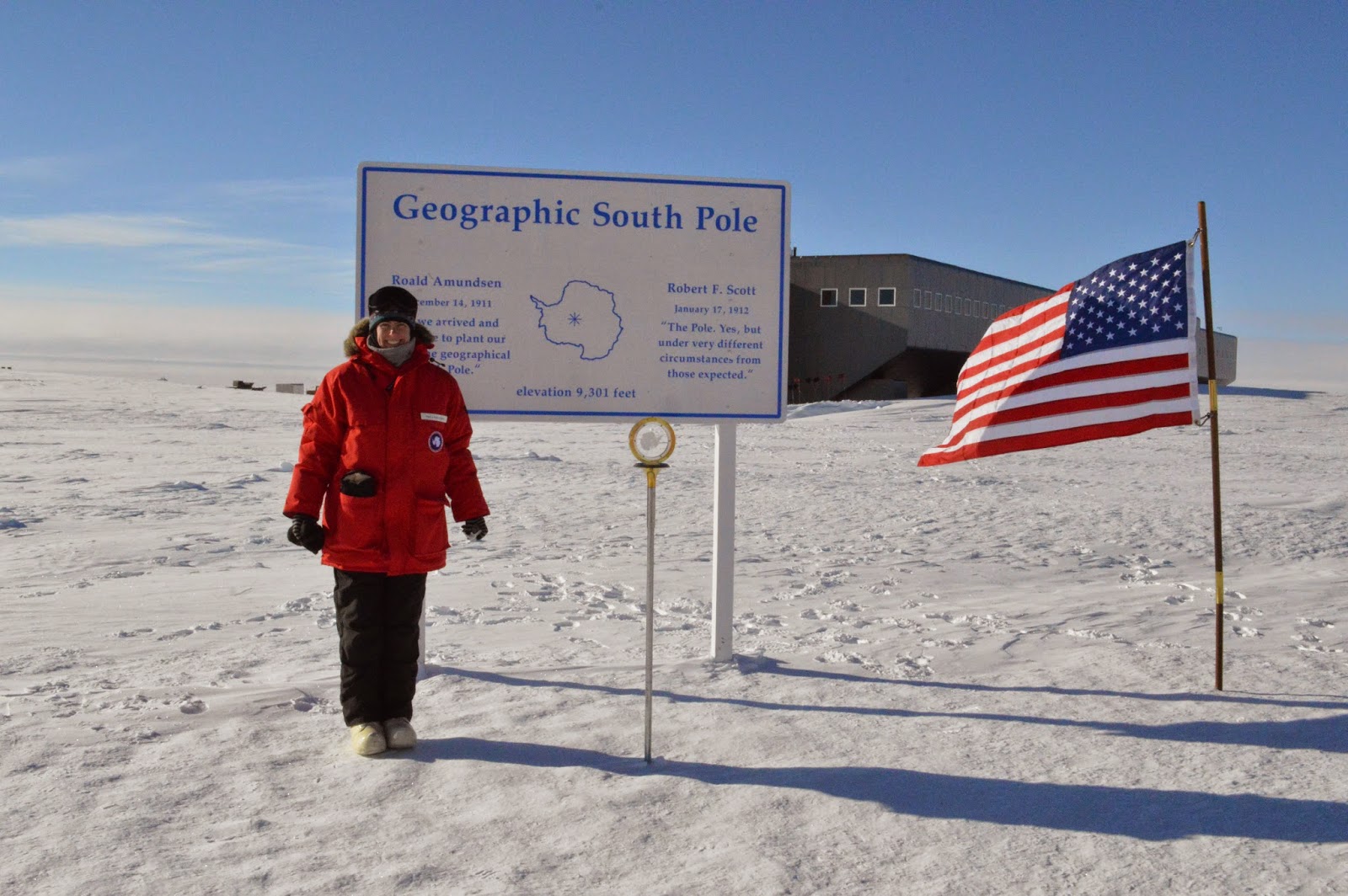 |
| Wool socks left to dry for centuries in the Cape Royds Hut |
 |
| Antarctica Up Close |
Around the turn of the 20th century, the
international audience became riveted by the lives and progress of an elite
group of polar pioneers attempting to uncover the last uncharted areas of the
world. This race to reach the elusive southern pole combined science and
discovery through a series of epic journeys led by driven, fearless, weathered
men from various nations from around the world. This time period is referred to
as the Heroic Age of Antarctic Exploration. While not a definitive time period,
most historians define the Heroic Age as the window between the 1890s and the
1920s. It was during that time that multiple expeditions tested the limits of
human capabilities prior to the technological and industrial supports currently in
place. It was a test of endurance, strength, bravery, and leadership where
Mother Nature rarely followed the planned program and she routinely reminded
them of her potential fury and their physical limitations.
| Nelson, Day and Lashly in Cape Royds Hut. Feb. 17th 1911 Taken from Scott Polar Research Institute, University of Cambridge |
As the name of the age suggests, these men* returned to their
home countries as heroes. Some like Scott, Shackleton, and Amundsen for various
reasons – including their personal accomplishments and social appeal – remain
familiar in our modern memories. Others, such as Gerlache, Bruce, Charcot, and
Filchner, have faded with time and only resonate with the most zealous
Antarctic enthusiasts. But is heroic the right word choice? A hero
is defined as someone who is extremely bold, altruistic, and determined. Someone
who undertakes extreme measures for a greater purpose. There is no question
that these men audaciously endured and repeatedly tempted fate in order to
accomplish a purpose that no human had previously achieved. But were they the
Supermen of their time? The stories, legends, and motives that swirl around
these expeditions continue to be debated. But when walking through their huts, I cannot help but think of them as simply people that endured and mostly
survived unimaginable conditions. For me, the mystique lies in trying to imagine
the character and drive necessary for a person to choose – and for some choose
multiple times – to spend years living under such conditions. They repeatedly
pushed the limits and fought to survive with minimal and seemingly archaic
resources.
 |
| Cape Royds Hut |
 |
| Discovery Hut |
I had the opportunity to visit two of the three huts located near McMurdo Station. I toured the Discovery Hut, which is a short walk on the outskirts of town, and the Cape Royds Hut, which overlooks the Adelie penguin colony. The third hut, Cape Evans, is located on a peninsula halfway between the other two. Over the past few years, the Antarctic Heritage Trust have painstakingly restored each of these structures. All of the objects abandoned by the huts' previous residents were documented, refurbished, and returned to their original locations. As you walk through the spaces, filled with unopened canned goods, hung socks, mummified seal carcasses, and forgotten journals, it seems as though the explorers simply woke up one morning realized they were sick of the expedition and high tailed it out of the Antarctic heading for warmer waters and modern conveniences. Perhaps this is not so far from the actual truth.
 |
| Mummified seal carcasses in the Discovery Hut. Oil oozes onto the floor. |
 |
| Shelf in the Discovery Hut |
The personality of the Discovery and Cape Royds huts fits
with their individual history and use. The Discovery Hut was purchased and
erected by Scott during his 1901-1904 Discovery expedition. It was a prefabricated building from Australia. Perhaps not the best decision in design choice as the
structure screams Outback bungalow rather than Polar survival shelter. Not
surprisingly, Scott and his team found living on their ship frozen in McMurdo Sound
more appealing than taking up residency in this unsuitable hut. As a result,
Discovery Hut was used for entertainment purposes and in desperation by later
explorers. Walking through the dark and sooty rooms, I found the space gloomy and unsettling. There was nothing homey or comforting about the place.
Despite its historical importance, I was quite happy to step back outside into
the glare of the Antarctic sun and whipping salty wind.
 |
| Cape Royds Hut - Shackleton's signature on a crate repurposed as a headboard |
 |
| Cape Royds Hut - The "kitchen" Same one seen in the previous historic picture |
The hut itself is remarkably brighter than the Discovery Hut with an open floor plan. A large stove dominates the center with bunks situated around the edges. In addition to the layout, Shackleton's feng shui is significantly improved by keeping the rotting carcasses separate from the living quarters. While the air is still stale, it does not reek of creosote and death. I want to linger, to remember the time before the hut became historic, and to imagine the conversations between men on the cusp of becoming heroes.
 |
| Antarctica Up Close Answer |
* It was in fact all men. The first women to spend a winter
in Antarctica did not arrive until 1947 and were wives of deployed researchers.























